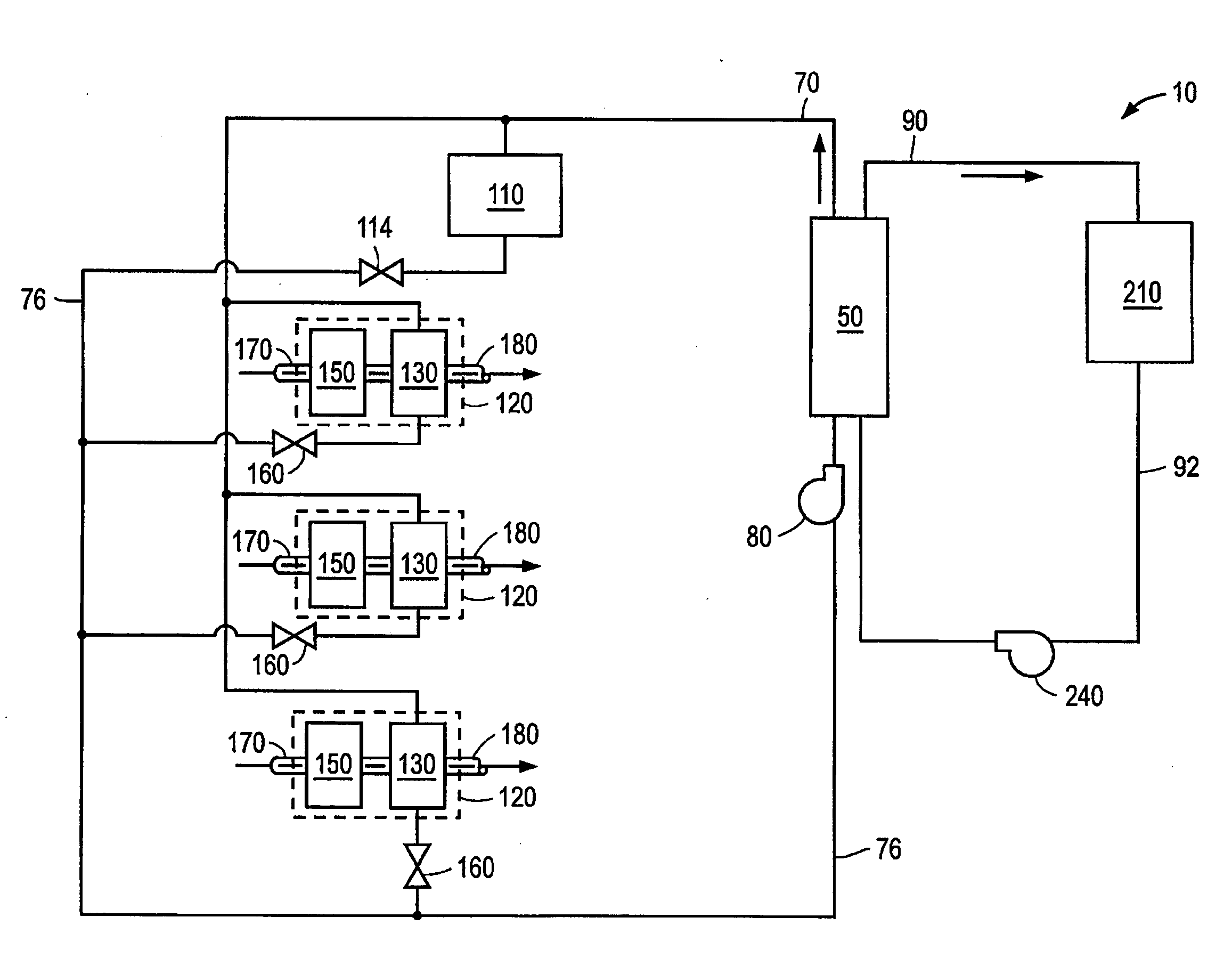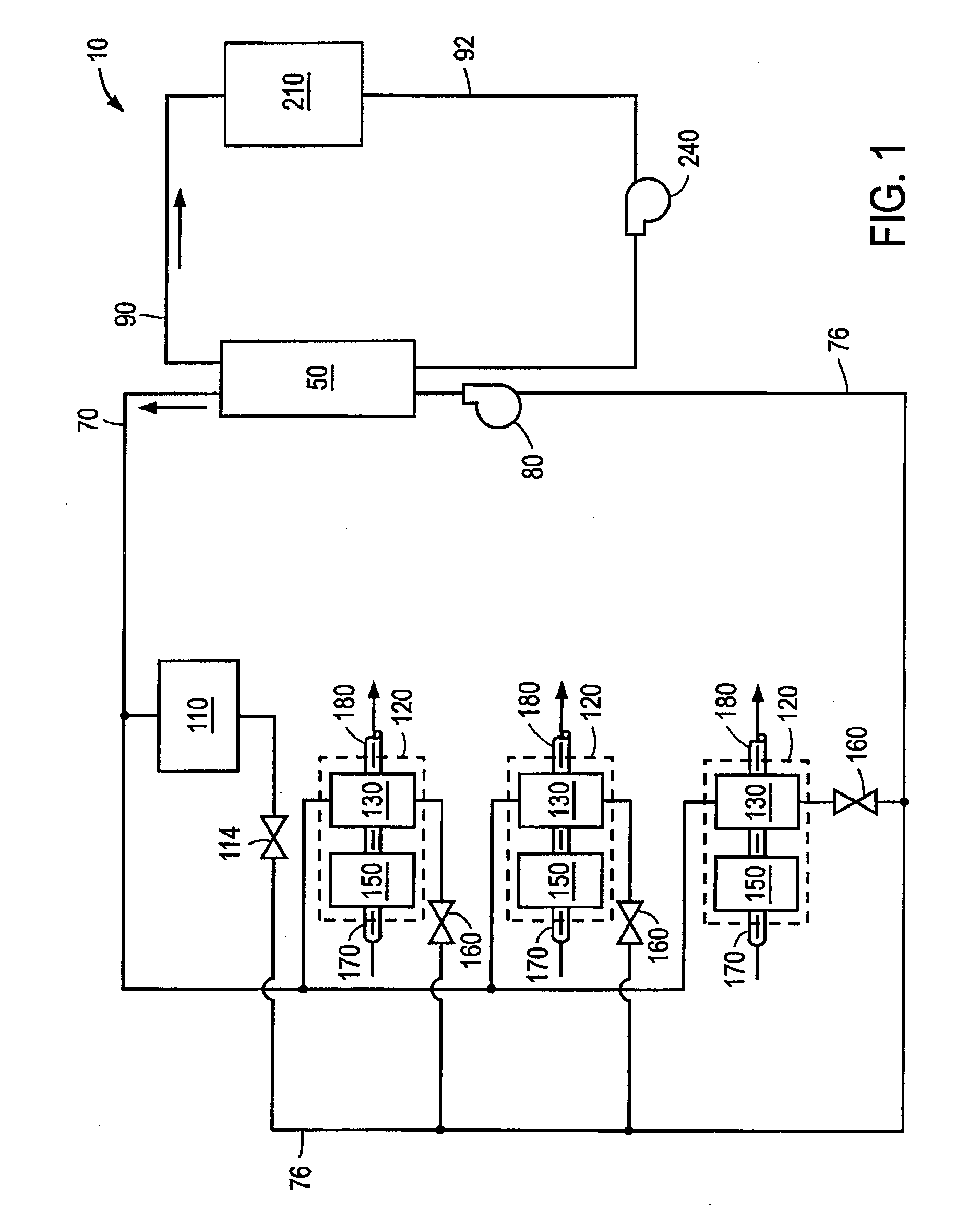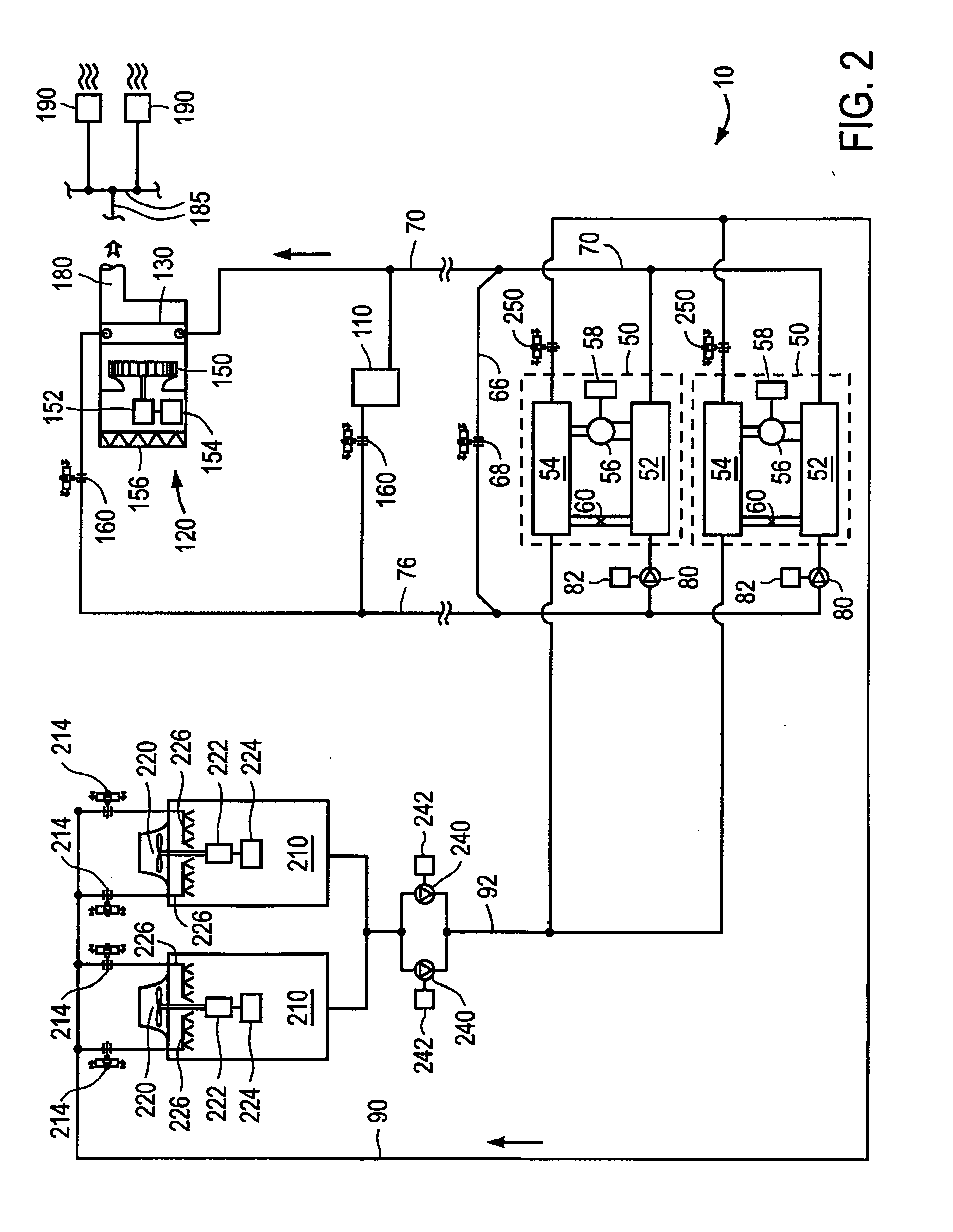Optimized Control System For Cooling Systems
a control system and cooling system technology, applied in the field of climate control systems, can solve the problems of undesirable fluctuations in the temperature of conditioned offices and other spaces, waste of cooling system resources, etc., and achieve the effect of improving the energy efficiency of the overall cooling system
- Summary
- Abstract
- Description
- Claims
- Application Information
AI Technical Summary
Benefits of technology
Problems solved by technology
Method used
Image
Examples
example
[0145]The following is one implementation of the detailed sequence steps that the control systems can use to reduce the overall energy costs of a cooling system.
[0146]Cooling Plant
[0147]I. Sequences
[0148]A. Integral Windup Prevention
[0149]1. Typical sequence for control loops: When the HVAC systems are shut down each night, and again when the systems are started up each morning, all integral terms in the controller are zeroed out so that there is no residual “integral windup” to interfere with normal system operation.
[0150]2. Similarly, when time delays are invoked that lock in a specific setpoint or speed, the tendencies of the control system will be to windup the integral term. When the time delay is released, the integral could drive the setpoint to one extreme or the other.
[0151]3. At the end of the time delay period, when the normal sequences are about to take over control of the variable, the integral term shall be zeroed out as required to maintain stable system operation.
[01...
PUM
 Login to View More
Login to View More Abstract
Description
Claims
Application Information
 Login to View More
Login to View More - R&D
- Intellectual Property
- Life Sciences
- Materials
- Tech Scout
- Unparalleled Data Quality
- Higher Quality Content
- 60% Fewer Hallucinations
Browse by: Latest US Patents, China's latest patents, Technical Efficacy Thesaurus, Application Domain, Technology Topic, Popular Technical Reports.
© 2025 PatSnap. All rights reserved.Legal|Privacy policy|Modern Slavery Act Transparency Statement|Sitemap|About US| Contact US: help@patsnap.com



